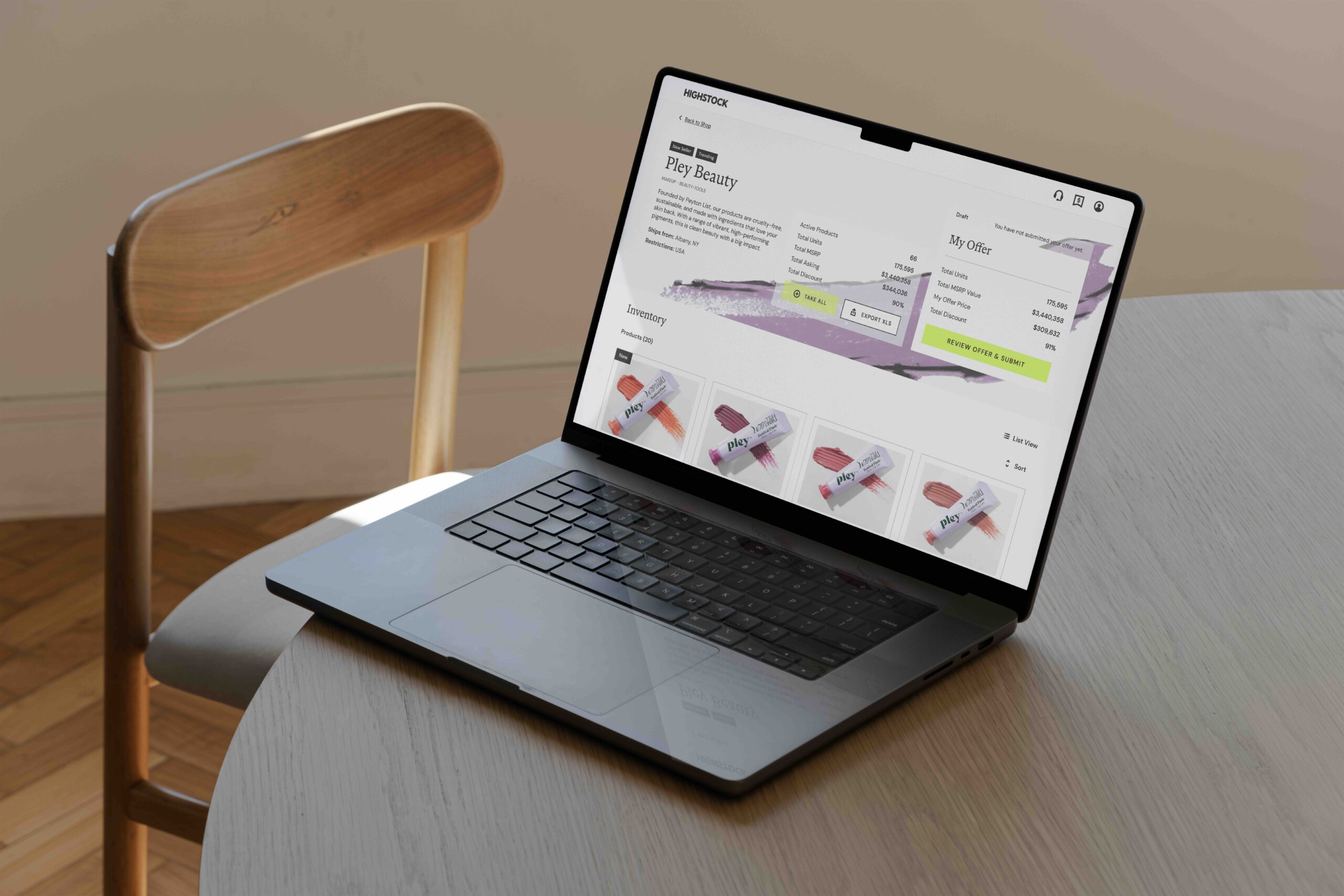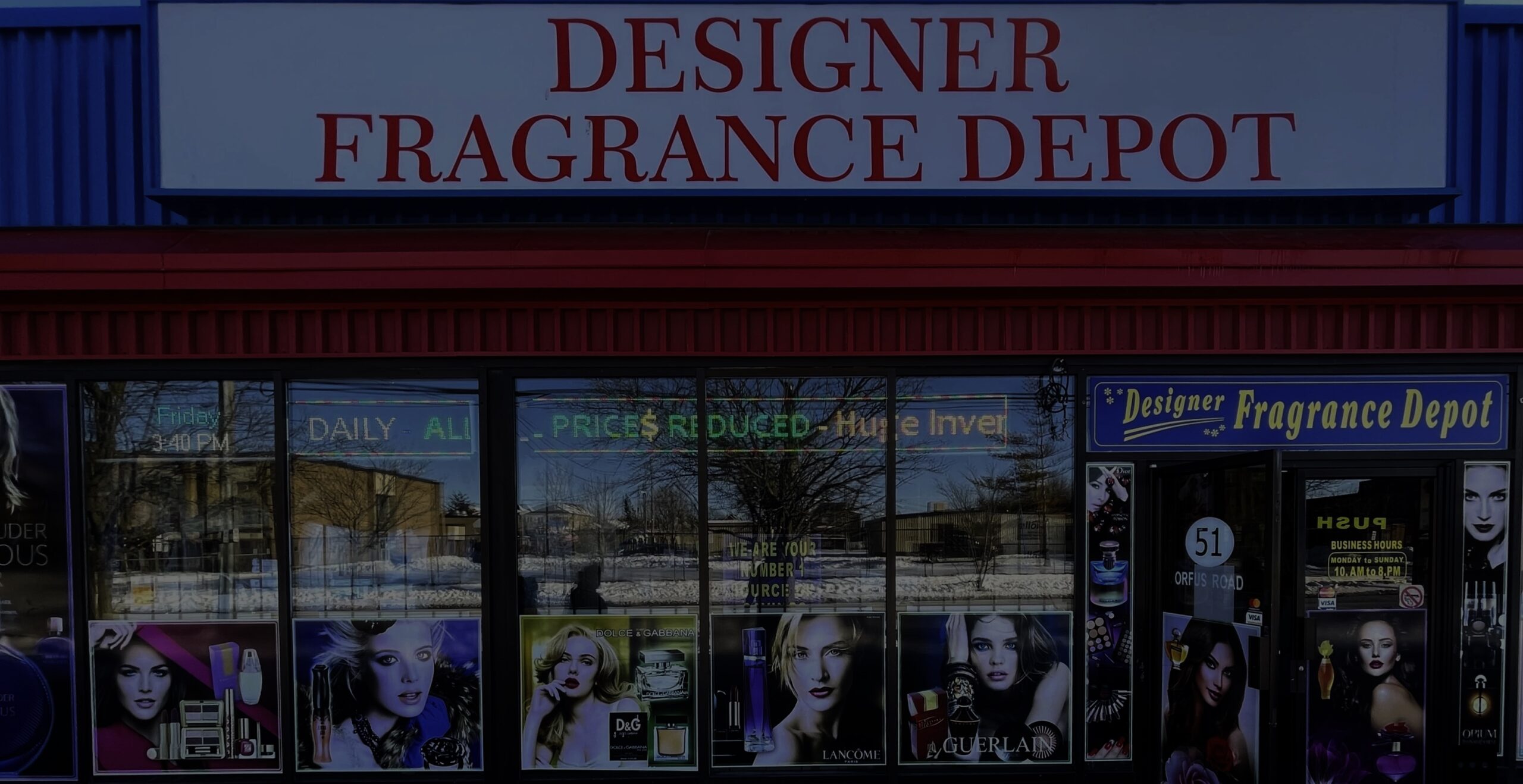
Highstock Wants Beauty Brands To Stop Being Embarrassed And Start Getting Smarter About Surplus Inventory
When Camille van Horne launched Highstock, a startup connecting beauty brands with excess inventory to buyers globally, a smidge over six months ago, she was chagrined by just how emotional decisions about excess inventory are.
“Brands will often come forward and be embarrassed that they have surplus or unsold inventory,” she says. “The reality is there’s nothing to be embarrassed about because, if you look at the numbers, only 50% of product produced within a given year gets sold in that year in beauty and personal care. Ten percent of product ends up incinerated, and that amounts to about $50 billion a year of what could have been proper sales basically being put to waste.”
Highstock, which the magazine Fortune recently likened to “eBay for discount inventory,” where “buyers place bids for shipments of inventory, and brands can accept, reject, or counteroffer,” is helping brands set emotion aside and put on their business hats as they deal with the practically universal issue of unsold inventory. As first reported by Fortune, the company has raised $5.5 million in funding from Greylock Partners and Instacart co-founder Max Mullen.
Highstock has worked with 50 beauty and personal care brands, including the now-defunct Pley Beauty and Goldfaden MD, on roughly $100 million in merchandise. According to information provided to Fortune, the typical transaction is $20,000, half of the transactions are with buyers outside the United States in India, Canada, Mexico and elsewhere, and 30% of the brands generate over $50 million in annual revenues.
To get a peek inside the secretive overstock world, Beauty Independent spoke with van Horne about the backstory behind Highstock, prices expected for excess inventory, the impact of tariffs on the surplus market, concerns about nonpayment from value retail players, and why it offers a sustainability and bottom-line win-win for beauty brands.
How did you get interested in excess inventory?
I started being interested in excess inventory when I worked at Sears and Kmart. Kmart would buy closeouts, and I realized that there was a whole market around gaining access to goods that are high quality at a lesser price. Actually, most of America works off of that model. What I mean is that most people in America cannot afford prestige beauty, but they are receptive to brand. That was an insight I gained early in my career.
I went to Stanford for my MBA and to Instacart, where I led the end-to-end fulfillment experience for shoppers, the folks going into the store to buy goods on customers’ behalf. I would see constantly when I was doing visits of CPG warehouses that there was a lot of unsold inventory cordoned off that was perfectly sellable, but it would be on route to tank, which is a kinder word to say destruction. I realized there was a market for branded goods, and the thing that was most challenging was, how do you move branded goods to the types of buyers that won’t disrupt brand preservation and the way that the brand wants to be presented to their core markets?
I teamed up with Ashish [Sinha], my co-founder. He’s an engineer by training, but he grew up in a manufacturing family, and his father had a whole experience around B-stock. During the pandemic, his father had to close his business because they were under lockdown for a very extended period of time. What ended up happening is he had to liquidate a bunch of his inventory, and distributors who had previously purchased at wholesale rates were now purchasing at liquidation rates. They were forced to shut down.
So, Ashish had learnings around the space. When we came together, we realized that there was a humongous opportunity to apply technology to moving unsold inventory, giving manufacturers and brands more power in the ecosystem where they could define where they want that product to go based on restrictions and the needs of their business.
Was the cordoned-off inventory in the CPG warehouses there because brands didn’t want it to go to certain places or because it was essentially trash?
The way the universe of purchasing works in the U.S. is that most major retailers will not accept product with anything less than a year shelf life. So, any type of product that moves into that sub-12-month shelf life best buy date ends up being in this territory of insecurity. You could move it to value channels, but most brands don’t want to oversaturate those channels because it means that it will divert customer traffic away from their core distribution, and it can upset other retailers.
So, if I’m a brand who’s a CPG brand selling to Walmart, and Walmart has 35% of my market share, then selling a lot of product at a steeper discount to T.J. Maxx creates a problem. That’s where Highstock is able to help solve problems for brands because we deliberately go after international buyers. They are getting discounts, but they are also moving that product to markets that won’t create what they call channel conflict.
What does Highstock generally work with brands on? What buyers are they connecting to?
We are deeply plugged into the ecosystem of true closeouts, but also just natural surplus inventory. Most brands have it. In the U.S., there are only so many channels that beauty brands can sell through. With the way POs are written, if you’re not responding to those POs quickly, you get fines.
You’re always incentivized to have more, and social media creates a lot of randomness in the way in which purchasing happens from consumers. So, most brands tend to over-index on inventory, even the highest performing brands. We’re working with brands that are truly prestige all the way to mass in beauty and personal care.
On the buyer side, where we spend a lot of time is trying to source trustworthy buyers who can buy in bulk. They may buy at a steep discount, but what that brings to brands is an ability to clean slate and push that product to areas that will not affect their core business.
Allbeauty is an example in the U.K. They’re an e-commerce player that buys from distributors, and they have sourced product from Highstock. We work with Designer Fragrance Depot in Canada. Sometimes these environments aren’t glamorous, but they are outside of the market the brand is trying to control.

Have you been surprised by anything in terms of what’s going on in the market now as you talk to brands and build Highstock’s business?
In this market, there’s a very natural tradeoff between high unit pricing and volume. What has surprised me is it’s not always obvious what kinds of brands are going to want smaller orders, high unit prices versus large orders, low unit prices.
I’ll explain. Let’s say I have 200,000 units across all of my SKUs that I can’t move. That might be a situation where I’ve lost a retail partnership. In those types of situations, some brands are sticklers for being able to meet cost. They will want very, very high pricing at the unit level, even though they have a lot of units.
There are other brands who say, “Just get this off my books, and I would accept $0 if you guarantee that it just gets away from my warehouses, so I don’t need to pay for overage.” Those were two polar extremes, but it’s hard to predict who is going to want what.
What prices should brands be getting for their excess inventory?
It depends on that pendulum I was describing. Do you want someone to buy all your products and take it out of market versus do you want opportunistic buyers who will pick and choose product and do that potentially at a smaller scale or even at a broader scale?
Let’s say wholesale pricing is 50% off SRP. What we see is that there are some buyers on our platform who are willing to go 50% off SRP. They will be buying a single case, maybe two cases a skew. On the other side of the pendulum, they’re going to buy everything indiscriminately. You could look at 90% off SRP. That’s a very common figure, and, surprisingly, a lot of brands do accept that.
Are you saying they shouldn’t accept that?
No, I think they should. From an economic perspective, brands should be thinking about their margin on a blended basis. You’re going to be able to sell a number of products at full price, and there are going to be products you can’t sell at full price.
If you’re holding onto inventory for over a year, there’s an opportunity cost there. You should be unlocking that value to be able to reinvest the cash into more lucrative endeavors. The math does pan out that one should be taking that dead stock and moving it out as quickly as possible so that you can extract cash and reinvest in other areas.
If I am a brand that has units I want to get rid of, what do I do?
Sign up at highstock.com and become a seller. Brands can find time with an account representative. That’s me right now. I’ll find time with the brand, understand what they’re looking for and their needs. Then, they can upload their inventory file directly to the platform. We then generate a compelling catalog of their product with their desired pricing that we surface to a closed network of business buyers aligned to the restrictions that we received from the brand.
Commonly, brands will tell us, “I do not want this to touch North America.” We can surface that catalog to non-North American buyers. Brands are always in the driver’s seat. Our thought here was, how do we give brands power in this position so they can effectively negotiate across bidders? So, brands will receive offers, and they are always in a position where they can take or decline the offer at no cost to them.
What about getting the products to where they’re going?
The way this market works is buyers always pay for freight. That factors into our conversation on pricing. If you want product to move out of market, pricing will look a little bit lower often because freight is paid for on the other side, and it needs to be factored into the buyer’s margin. The way that brands should think about their engagement on the platform is the offer they accept is all in.
Then, what ends up happening at that point is that buyers will take care of, in partnership with Highstock, customs, regulations and freight. Highstock is developing an arm that will be a huge advantage to brands looking to register product internationally. We’ll help brands ensure that they’re set up to sell in these markets for excess inventory by supporting the process of getting registered and working with the buyer to make sure they’re adhering to local regulations.

What do people not understand about the space you’re in?
The main thing that folks don’t understand is that there are thousands and thousands of players in the space. It is not just T.J. Maxx. We work with T.J. Maxx and like T.J. Maxx, but there is this idea that T.J. Maxx is the only option. There are a number of value players in the space, especially if you extend your market internationally. In fact, it’s a way for them to be more competitive in their market because there’s so much around beauty internationally via social media.
It took us some digging to understand is that there’s a huge network of retailers who are playing in this space. What’s hard and what Highstock provides is, who do you trust and who you not trust?
One of the concerns that brands have in this market is getting paid. How should they make sure they get paid for their excess inventory?
For specific offers, and this becomes very apparent in the offer stage when brands are evaluating an offer from a buyer, we will offer same-day payment. So, we will pay the brand as Highstock and manage payment terms with the buyer. That is a protection that Highstock provides to brands.
Another thing that brands are afraid of is brand protection and ensuring that the product ends up where it’s stated to end up. What we do there is we vet all of the buyers on the platform, and we also provide tracking to brands around the whereabouts of the product. And we can take various levels of aggressive approaches to make sure that we understand the end-to-end supply chain.
Are the retailers you work with different from other retailers in terms of their payment terms?
A lot of the importers prepay. Some pay upon receipt, so they’ll do an inspection of the product seven days after pickup and review. At that point, they pay. You see Saks Off Fifth or T.J. Maxx have 60-day payment terms upon receipt of the invoice. So, there’s a huge delta in payment terms.
Brands are often in a challenging position. Even the top performing retailers in the country have payment terms and RTVs, meaning if the product doesn’t sell, the product ends up back with the brand. This feels like a place where we can create some alleviation for brands.
What do you charge?
We charge only for accepted offers, so there’s no listing fee. Basically, if we generate offers, we don’t charge the end brand or seller. We do charge 10% on the accepted offer value for buyers that the brand doesn’t already have a relationship with.
What’s the sustainability aspect of what you do?
Brand leaders do not want the black mark of having had to incinerate product. I think that matters. The way we communicate with brands about this problem is we try to present this as a win-win to them where they’re able to extract cash and do that in a way that’s also conducive to a great sustainability outcome. What is interesting about this space is that it’s actually very expensive to destroy product. You incur a cost when you decide to incinerate.

How much does the incineration cost compare to putting inventory on Highstock?
Much, much more, so that is an obvious selling point. So, when sustainability isn’t the winning message, cost is the winning message. And that’s why this is such a win-win because you can speak to the mission statement of sustainability alongside hard numbers.
How are you thinking about tariffs being imposed or considered by President Donald Trump?
If you think about the core components getting more expensive as a byproduct of tariffs, we expect pricing to go up across the brands that we carry, but we expect buyer demand to stay somewhat constant, maybe slightly reduced given the strain. So, what we expect to see as a byproduct of tariffs is more inventory available on the market.
Even if there are retaliatory tariffs, we do not expect that to affect demand internationally because we’re already moving products at such a discount relative to market that buyers will still be open to participating in those deals. So, our general perspective is that tariffs will be a nuance to the way we have to conduct business, but it should actually support our business. As far as it creates shifts in demand, only an agile startup can fully react to and will be harder for other players to support.
When brands are considering what to do with excess inventory, it would be better if they come to you before they’re completely desperate, right?
The worst thing that you can do as a brand is, if you have a sunscreen product, reaching out a month before the sunscreen is going to expire, which happens all the time. So, having a pulse on expiry is important as a brand and giving players at least six months to be able to find appropriate buyers will set up a brand way better.
It’s very common for brands to not want to look at their inventory position and not look at expiry proactively. This is not the fun part of brand building. Being more proactive, especially on the expiry point, means we’ll reap much better results in this market because, as soon as you get into true short-dated products, you’re looking at very low recovery.
Given your relationship with brands and the view you’ve had into their logistics providers, can you help with the logistics part?
Our future is we would love to have ways to identify inventory proactively for brands like using Shopify plug-ins, making sure that we’re even a step ahead of the brand. Then, we can give them signal, and they don’t even need to think about it.
I think the cognitive load is a hard aspect for brands. So, when to decide when to cut loose specific products, and relationships with 3PLs does matter. We see a lot of randomness in the operation and that can relate to a lot of different factors when you’re dealing with what they call excess and obsolescence.
Brands are not going to be as good at doing inventory management, so we’ll see deltas in inventory at the final hour. We’ll have various responsiveness from 3PLs. Everything you can imagine happens, and it’s a huge headache. So, that’s something that we can take off of the brand plate.





Leave a Reply
You must be logged in to post a comment.